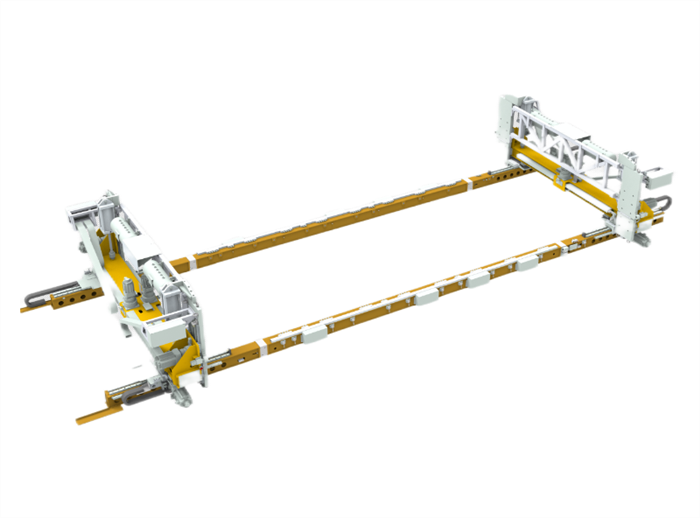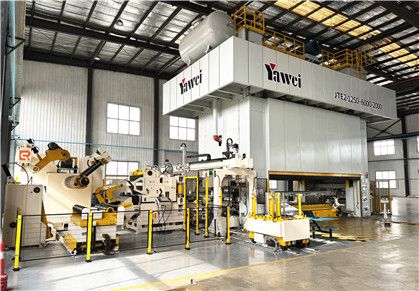Press Transfer System/ Transfer Systems

We offer a range of press transfer solutions tailored to your specific needs. Whether you require a system for heavy-duty applications, high-speed production, or precision parts, our press transfer machinery can meet your requirements. Our solutions are designed to optimize assembly processes, reduce downtime, and improve overall efficiency.
By implementing our press transfer system, you can experience improved productivity, reduced labor costs, and enhanced product quality. Our system enables seamless material handling, minimizing errors and increasing overall process accuracy.
Choose SUNRUI press transfer system to revolutionize your manufacturing operations and gain a competitive edge in the market. Contact us today to learn more about our press transfer technology and how it can benefit your business.
Brief of Press transfer systems
Press transfer systems are an essential component in the manufacturing industry, especially in the field of hydraulic transfer presses, eccentric transfer presses, and servo transfer presses. These systems are designed to facilitate the transfer of materials and components between press columns or at the front and back sides of the press.
SUNRUI will explore the structure of press transfer systems and their compatibility with various types and brands of presses.
One of the key features of press transfer systems is their flexibility and compatibility with different types of presses. Regardless of whether you are using a hydraulic transfer press, eccentric transfer press, or servo transfer press, these systems are designed to work seamlessly with all types and brands. This compatibility is crucial as it allows manufacturers to choose the press that best suits their specific requirements without having to worry about compatibility issues with the transfer system.
The structure of press transfer systems is primarily designed to ensure smooth and efficient transfer operations. These systems are typically equipped with advanced robotic technology that enables them to perform precise and accurate movements. This is important as it ensures that materials and components are transferred with precision, reducing the risk of damage or misalignment.
In addition to their structural design, press transfer systems can also be configured with a press feeding system and destacker. These additional components further enhance the efficiency and productivity of the overall manufacturing process. The press feeding system ensures a continuous supply of materials to the press, eliminating any downtime or delays. On the other hand, the destacker allows for the automatic stacking and unstacking of materials, reducing the need for manual handling and increasing overall efficiency.
One of the key advantages of using press transfer systems is the ability to offer various solutions for parts carriage between presses.
Press Transfer Robots, in particular, are highly versatile and can be programmed to perform specific transfer operations. This allows manufacturers to customize the transfer process according to their specific needs and requirements. Whether it is transferring small components or larger materials, these systems can handle a wide range of applications. In conclusion, press transfer systems play a crucial role in the manufacturing industry, enabling seamless and efficient transfer operations between press columns or at the front and back sides of the press.
These systems are designed to be compatible with all types and brands of hydraulic transfer presses, eccentric transfer presses, and servo transfer presses. With their advanced robotic technology and additional components such as press feeding systems and destackers, these systems offer flexible solutions for parts carriage between presses. By utilizing these systems, manufacturers can enhance their productivity, reduce manual handling, and ensure precise and accurate transfer operations.
Press Transfer Systems General Specifications
Press Transfer Systems are an essential component of modern manufacturing processes. They play a crucial role in enhancing production efficiency and reducing labor costs. With their ability to automate the movement of materials and parts between different workstations, press transfer systems have become a standard feature in many industries.
One of the key features of press transfer systems is their impressive working speed, which can reach up to 30spm (strokes per minute). This high speed ensures that materials and parts are swiftly moved from one location to another, minimizing downtime and maximizing productivity.
To provide flexibility and adaptability, press transfer systems typically come equipped with three programmable axes. These axes can be adjusted and programmed to perform specific movements and actions, allowing for precise material handling and positioning. This feature enables manufacturers to customize the transfer system to meet the unique requirements of their production process.
The transfer bar dimensions are specified according to the transfer press bolster dimensions. This ensures compatibility and seamless integration between the transfer system and the press. By aligning the dimensions, manufacturers can avoid any potential issues or inconsistencies that may arise during the transfer process.
One of the standout features of press transfer systems is their automatic bar change capability. This means that the system can automatically switch and replace transfer bars as required. This feature eliminates the need for manual intervention and reduces the risk of errors or accidents. The automatic bar change functionality significantly improves efficiency and allows for uninterrupted production.
Additionally, press transfer systems are equipped with automatic air and electric connections. This means that the system can establish and maintain the necessary connections for pneumatic and electrical devices without manual assistance. These automatic connections ensure smooth operation and eliminate the risk of human error in setting up the system.
The rack and pinion driven axes are another crucial aspect of press transfer systems. This drive mechanism provides precise and reliable movement control, allowing for accurate positioning and smooth transfers. The rack and pinion system ensures that the transfer system operates with minimal backlash and maintains high levels of precision throughout its lifespan.
In conclusion, press transfer systems have revolutionized modern manufacturing processes. With their high working speed, programmable axes, automatic bar change, automatic air and electric connections, and rack and pinion driven axes, these systems significantly enhance production efficiency and accuracy. By automating material handling and transfer, manufacturers can achieve higher productivity, reduce labor costs, and improve overall operational efficiency. Press transfer systems are a testament to the continuous advancement of technology in the manufacturing industry.
Transfer Axis Movements
The X, Y, Z movement of a press transfer system is the movement in three different directions:
X-axis movement
This refers to the horizontal movement of the transfer system. It is usually along the width of the press bed.
Y-axis movement
This refers to the vertical movement of the transfer system. It is usually along the height of the press bed.
Z-axis movement
This refers to the depth movement of the transfer system. It is usually in and out of the press bed, towards or away from the operator or other equipment.
The X, Y, Z movement allows the press transfer system to accurately position and transfer parts or materials between different stations or processes in a manufacturing operation.
Video of Transfer System



